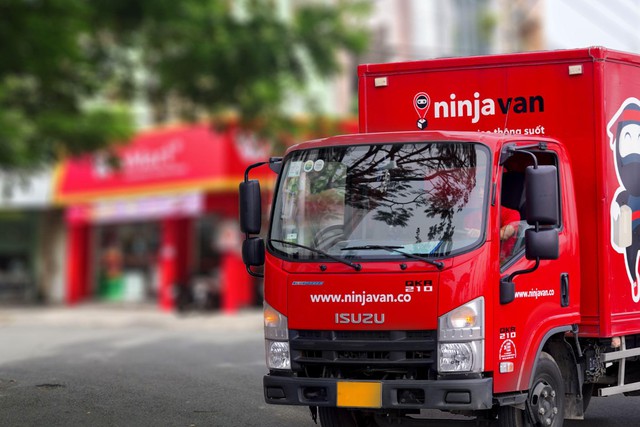However, one store ran out of stock yesterday, while the other remains fully stocked. What caused this “mismatch”?
The answer lies in the way the brand is handling and interpreting replenishment data. When reports are aggregated by region or channel, the micro-differences between individual stores are “blurred”. Traditional distribution methods – from center to region, from region to store cluster, and finally to each store – cause the system to lag behind the actual consumption pace of each store.
When data is “blurred,” profits are “eroded”
This leads to fast-selling and slow-moving stores being grouped into the same report, obscuring critical factors such as customer profiles, peak shopping times, and even in-neighborhood locations. Meanwhile, these important factors lead to decisive differences in operational efficiency.
Due to the lack of micro-data at the store level, brands have to allocate promotional budgets and inventory based on averages. As a result, fast-selling stores run out of stock mid-week, while slow-moving stores are left with excess inventory, creating stockouts and slow capital turnover.
A McKinsey study found that 50-70% of the performance difference between stores is not due to geographic location but to inventory management, promotional policies, and responsiveness to on-the-ground data. In other words, the outdated replenishment model with a regional (provincial/district) perspective and fixed schedules is limiting the profit potential of each store.
Transforming Replenishment Thinking: From Operational Management to Growth Leverage at Each Store
Recognizing this fact, CEOs of leading retail chains have realized that instead of viewing the market by “consumption area,” they need to treat each store as an independent entity – with its own consumption pace, customer behavior, and inventory cycle. To achieve this, businesses need a replenishment platform that is flexible and deep enough to “reach” each store.
According to Forrester, retailers who adopt micro-data at the store level have seen revenue growth of 15-20% in just six months. But to do this, the replenishment system must be able to eliminate middlemen, speed up delivery, and approach stores based on demand. At the same time, replenishment data needs to be displayed by delivery, by item, and by store to reflect the actual flow of goods.
In Vietnam, some new replenishment service models have begun to meet this need. Ninja B2B Stock Replenishment Solutions, designed by Ninja Van, is a prime example. Built on e-commerce infrastructure, this model allows for replenishment from as little as 5kg, with flexible delivery frequencies of 3-5 times per week. Ninja B2B Stock Replenishment Solutions also provides replenishment data down to the store level, enabling businesses to monitor performance by shelf, thereby making distribution, inventory, and promotional decisions that are closer to reality.

When Replenishment Becomes a Strategy: Optimizing Each Store is the Key to Sustainable Growth
Sharing the data advantage of this replenishment model, Mr. Phan Xuan Dzung, Chairman of Ninja Van Vietnam, emphasized: “Data should not stop at the region but needs to “reach” each store. Only by seeing where the stock is and why it is not turning over can businesses unlock their growth potential.”
With the philosophy of “One order goes, a thousand shelves are filled,” the Ninja B2B Stock Replenishment Solutions model is not just a logistics organization but a new way of thinking about supply chain management. It’s time for retailers to view logistics not just as an operation but as a growth lever. And it’s time for them to look for replenishment partners who are flexible, market-savvy, and ready to keep pace with the times.
By adopting the Ninja B2B Stock Replenishment Solutions model, retailers can significantly streamline their operations by cutting out middlemen in the distribution process. They only need to work directly with Ninja Van, which owns an e-commerce delivery network with over 550 trucks and 5,000 drivers nationwide. Thanks to the flexibility to replenish from as little as 5kg and a frequency of up to 3-5 times a week, this model ensures timely stock replenishment for stores, reducing the average replenishment time by 12 hours compared to traditional methods. Additionally, detailed data for each delivery at each store enables businesses to accurately assess store performance, optimize inventory, reduce shortages, and increase sales.
Eyewear Revolution: Anna’s Journey with Odoo ERP
In a booming and highly competitive eyewear market, Anna Eyewear – a domestic retailer with over 60 stores – made a strategic decision to overhaul its management model with the implementation of the Odoo ERP system.
The Evolution of China’s Banking Strategy and Lessons for Vietnam
The Chinese banking system has undergone a strategic transformation over the past decade. Moving away from a model reliant on large-scale credit growth, fueled by real estate lending and state-owned enterprise loans, the industry has embraced a new paradigm. This paradigm shift involves a comprehensive approach to finance, diversifying revenue streams, and embracing digital transformation. This evolution reflects a conscious effort to adapt to the demands of risk management, improved operational efficiency, and sustained growth.
The Great Banking Shake-Up: A Necessary Evolution.
Amid the ongoing wave of job cuts across many banks, Dr. Chau Dinh Linh, a finance expert from Ho Chi Minh City University of Banking, shared his insights with the Bank Times correspondent. He asserted that this strategic move is a well-planned step for banks to realign their operations and meet the evolving demands of the new economic landscape.
“IPH Tower Achieves Prestigious LEED Platinum Certification.”
In April 2025, IPH Office Tower and The Loop Mall were proudly awarded the prestigious LEED v4.1 Platinum certification – the highest rating in the global green building assessment system by the U.S. Green Building Council (USGBC).





















